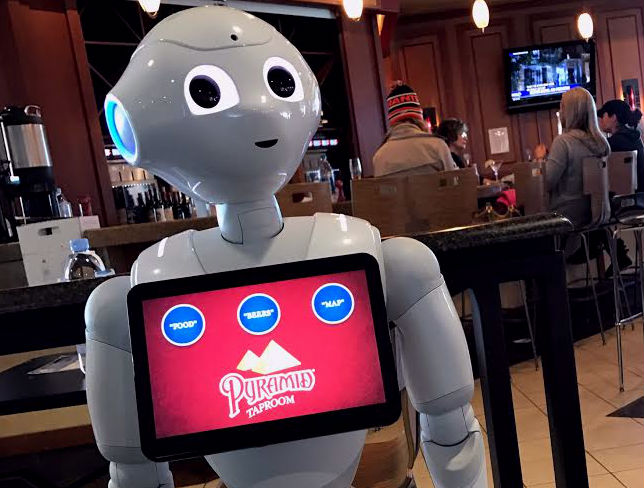Welcome to the future of travel! As airports evolve into complex ecosystems where technology and human interaction intertwine, it’s no surprise that robotics are making strides within this bustling environment. Enter Pepper, the humanoid robot rolling into Terminal 2 of Oakland Airport, on a mission to enhance the travel experience. In a groundbreaking pilot program, Pepper goes beyond just sitting on a shelf; it’s set to blend hospitality with high-tech assistance, redefining what it means to be a traveler in the modern age.
Pepper’s Role as the Ultimate Airport Buddy
Stationed at the Pyramid Taproom, Pepper will primarily serve as a friendly host, welcoming visitors with open digital arms. But that’s not all! This dynamic robot is designed to enhance guest experiences through a variety of interactive functions:
- Food and Drink Recommendations: From craft beers to seasonal dishes, Pepper is programmed to suggest popular items from the menu. After all, who better to share the delightful culinary offerings than a robot that never tires?
- Interactive Maps: Navigating an airport can be confusing, especially for first-time travelers. Pepper aims to alleviate this stress by providing a user-friendly interactive map to guide passengers toward gates, restrooms, and other essential amenities.
- Connecting Travelers: While Pepper’s primary focus is on the Pyramid Taproom, it can also point travelers toward additional dining options and areas within the airport, making it a conversational bridge for those eager to explore.
Building on Success: The Future of Airport Robotics
This pilot program is just a stepping stone for Pepper and a glimpse into what could become a widespread adoption of robotic assistance in airports. As we saw with the three dancing kiosks recently deployed at San Jose International Airport, the integration of robotics is not just about cutting-edge technology—it’s about enhancing the human experience. Passengers of the future can look forward to more interactive displays and personable robots guiding their travel journey.
Real-World Impact and Community Reception
While the pilot program’s success is yet to be determined, early reactions suggest an enthusiastic welcome from both travelers and airport staff. Many see Pepper as a positive addition, potentially alleviating strains during busy travel times and contributing to a more friendly airport atmosphere. The primary goal is to create a welcoming environment, demonstrating how technology can foster connections among people, even in a typically hurried setting.
Conclusion: The Road Ahead for Robotics in Airports
As travel demand continues to rise, the need for innovative solutions to improve airport efficiency becomes paramount. Robots like Pepper show promise in addressing some of these needs. They not only serve functional roles but also bring joy and engagement to travelers, reminding us that even in high-tech environments, a personal touch is essential.
In summary, Pepper represents the exciting potential of technology to improve our everyday experiences in airports. Through its engaging presence and helpful functionalities, it embodies the future of travel embellished with robot-human interactions. For more insights, updates, or to collaborate on AI development projects, stay connected with fxis.ai.
At fxis.ai, we believe that such advancements are crucial for the future of AI, as they enable more comprehensive and effective solutions. Our team is continually exploring new methodologies to push the envelope in artificial intelligence, ensuring that our clients benefit from the latest technological innovations.

